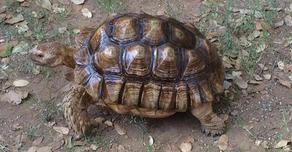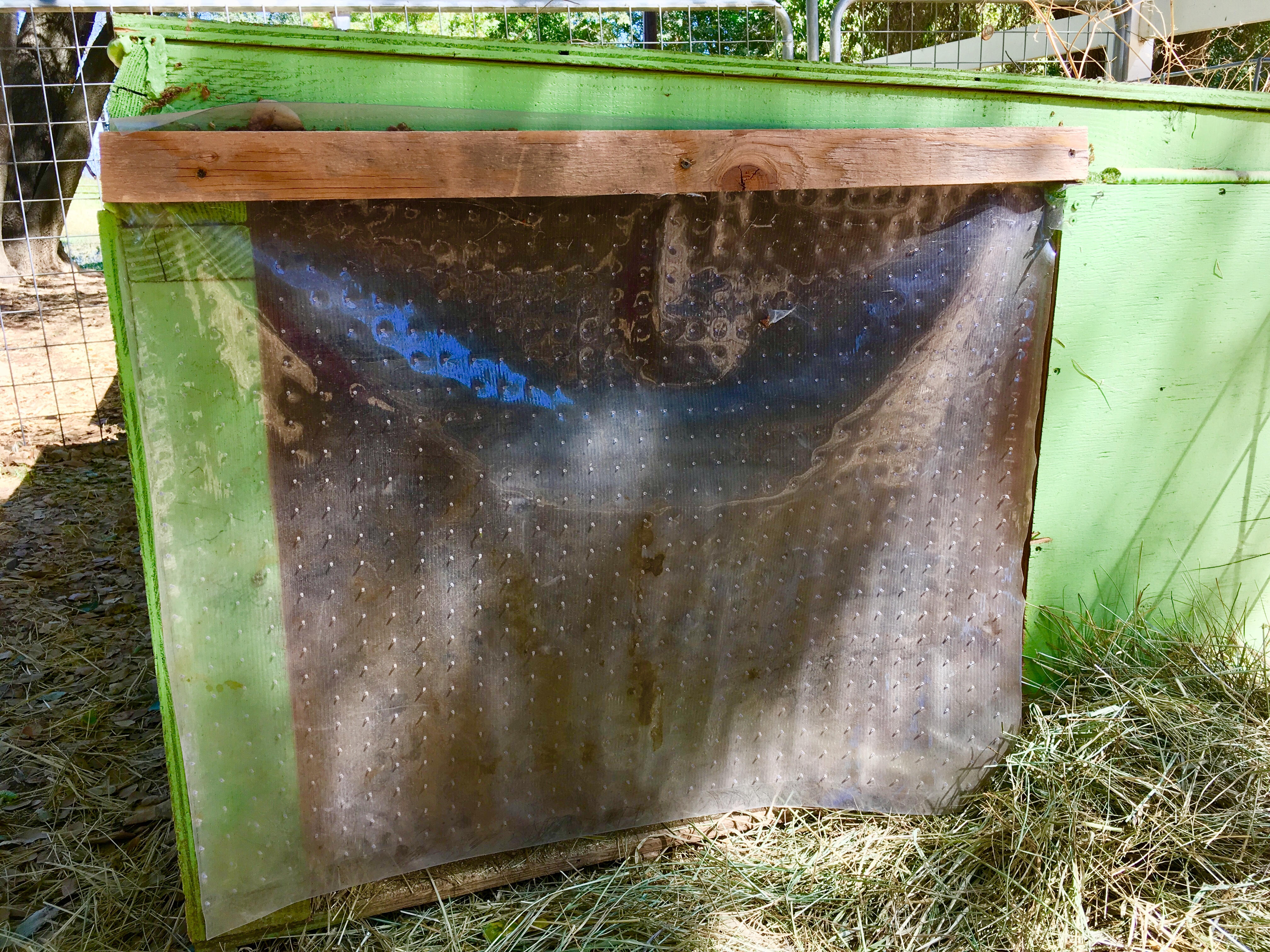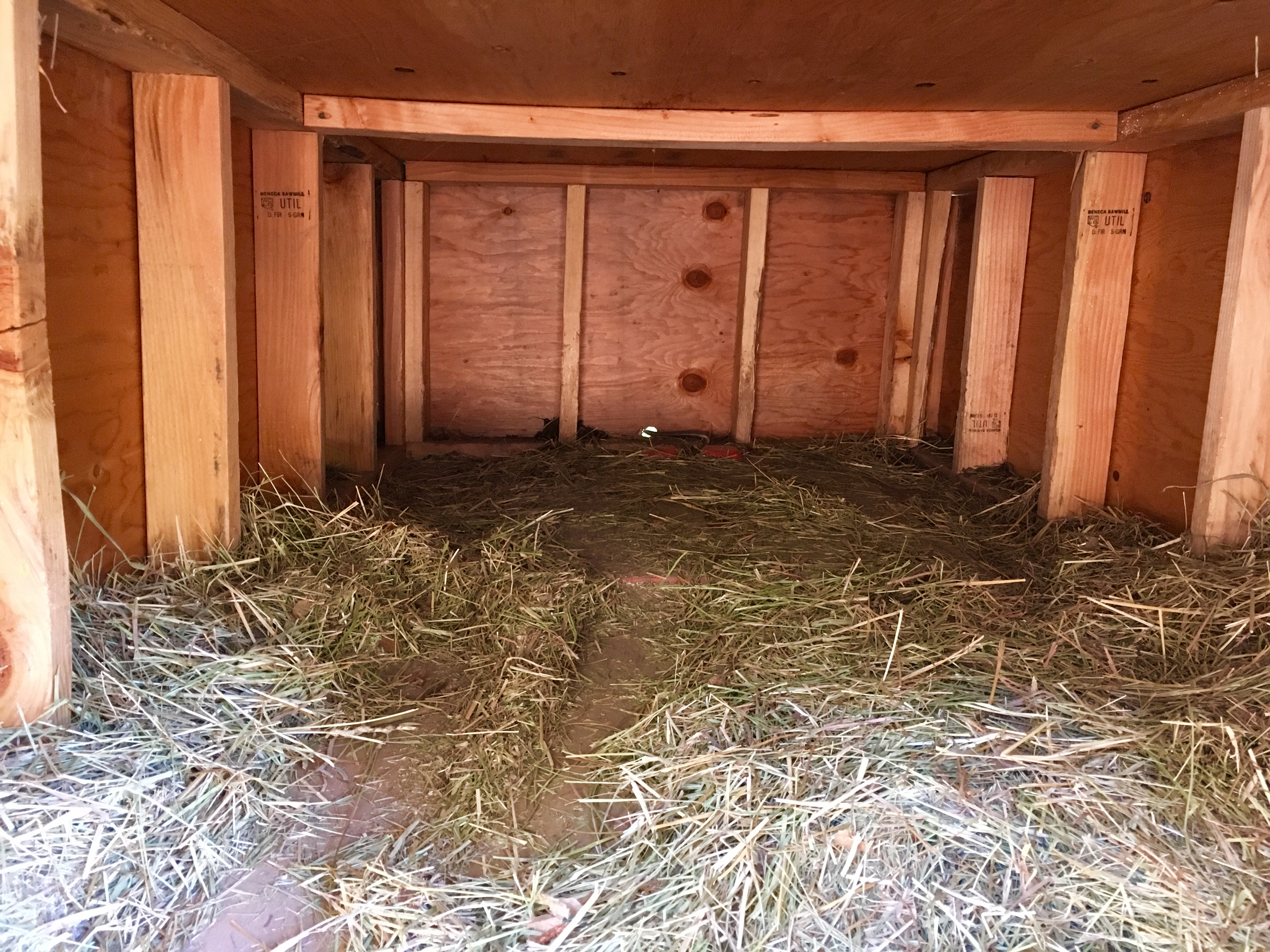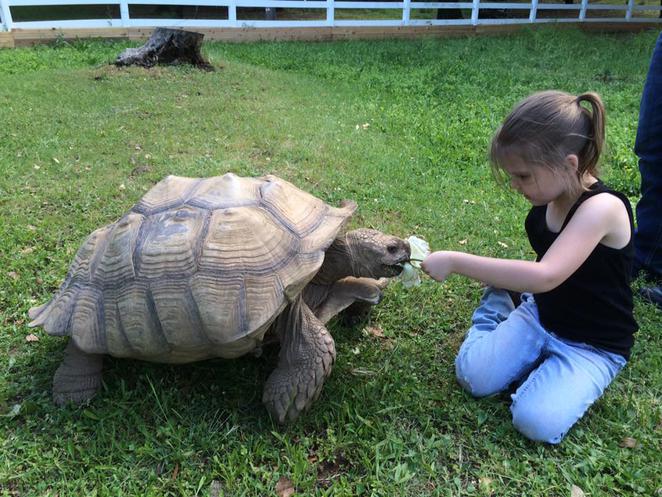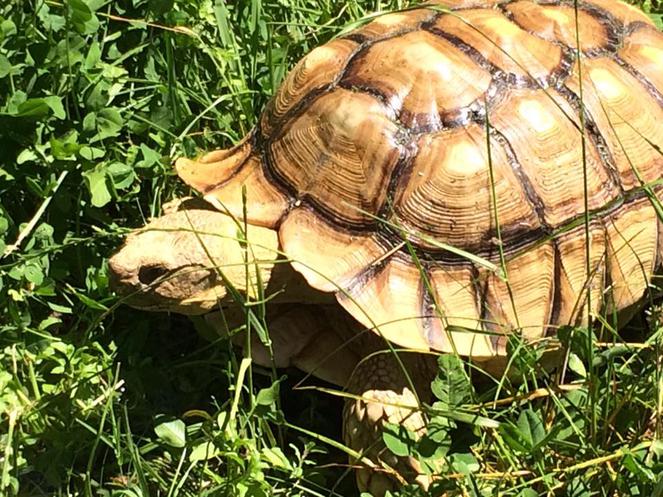Sulcata Care Information
Sulcata's are also called African spurred,
African spur thigh, and just spurred tortoises.
Did you know Sulcata's are one of the hardiest tortoises and can live all year long outside. They just need the proper heating in the colder months. We prefer the Kane Heat mats inside a dog house. 1/2 the floor is heat mat and 1/2 the floor is wood where they can still get off the mat if they get to hot, but they are still inside out of the wind and rain. We like the see through carpet runner (plastic) so they get the sunlight. We also have a wood door to close in extreme weather. We don't suggest heat lamps as they catch fire too easily.
Sulcata tortoises that live outdoors are tolerant to various temperature ranges. High temperatures are not going to be a problem provided the tortoise has a shaded area to escape to if desired. The tortoises themselves can handle surprisingly cold temperatures, as low as 45 degrees Fahrenheit, with no problems. When nighttime temperatures drop below 50 degrees, a heated hide box should be provided that maintains at least 55 to 60 degrees at night (70s is better), or the tortoises should be brought in during those times. Sulcata's need quite a bit of space as they grow. A 80-100 lb tortoise needs at least 50x50 feet. Bigger is better. A secure fence is a must. These little bulldozers will test any fence.
Indoors, sulcata tortoises can be maintained at normal room temperatures: 68 to 80 degrees. They should also have a basking area heated by an overhead light. This spot should be in the 100-degree range. Like most diurnal, herbivorous reptiles, they need a UVB light in their indoor enclosures to help them properly process the calcium in their diets. Keep lights on 12 to 14 hours a day, and turn off all light and heat sources at night.
Sulcata Tortoise Size
Sulcata tortoise hatchlings measure approximately 1½ to 2 inches in carapace length. Growth rates of sulcatas are probably more variable than any other tortoise. You could literally have a 10-inch tortoise that is 3 years old or 10 years old. Many adult sulcata tortoises break the 100-pound mark. These tortoises (males especially) can reach 200 pounds. Our 27 year olds weigh about 230 lbs each. Sulcata tortoises grow rapidly for the first five to 10 years, and then their growth slows with age.
Sulcata Tortoise Life Span
Because sulcata tortoises haven’t really been raised from birth for very long, it’s still hard to determine what age a well-raised sulcata born into captivity is capable of living to. Raised on a lean, high-fiber diet, captive-raised animals in low-stress environments have higher life expectancies. Most indications are that sulcata tortoises can live more than 100 years. Johnathan is belived to be the oldest living tortoise at the ripe old age of 185. https://www.youtube.com/watch?v=OkfpFAzUriE
Sulcata Tortoise Food
Sulcata tortoises are eager eaters, rarely turning down a meal. With adult tortoises, the best staple diets are various grasses and leaves, the same as their natural diet. They will graze on any of the lawn grasses, dandelion, mulberry leaves, grape leaves, hibiscus leaves and flowers. Sulcata tortoises eat grass hays. Grass hay is 80% of their diet. Baby and smaller sulcatas have a harder time eating the tougher grass and hay because of their less powerful jaws.
We also use spring mixes, which have several leafy ingredients in them, and we supplement with kale, collard greens, turnip greens and any of the darker lettuce types. Cactus pads have become a major part of the diet of many of our tortoises as well. Mazuri Tortoise Diet is offered occasionally to cover any of the nutritional bases that the other diet may have missed. Variety is the key. Feed tortoises from a grass surface, flat rock or concrete, or from a tray. To prevent them from eating soil or rocks, never feed tortoises directly from a gravel or dirt surface. Make sure to give them a cuttlebone for calcium.
Sulcatas love to graze. Making their enclosure on irrigated pasture is best if you have that option. Here are what our Sulcata enclosures look like.
This page is dedicated to the care of the
Sulcata Tortoise.
If you're interested in adopting a Sulcata Tortoise go to our adoption page and see what is available. We get them in all the time so keep checking back.
http://tortoiseacres.homestead.com/Adoptions.html
Copy these links to see our outdoor enclosures
https://youtu.be/SjFGYz_rr4s
https://youtu.be/U1NLA4sahkU
Sulcata Tortoise Water
Sulcata tortoises can have small water dishes in their outdoor enclosures. We use shallow, low-sided dishes. Cleaning must be done on a regular basis, as most tortoises tend to soak in their dishes and defecate in them. We also provide “mud holes” and puddle-areas where the tortoises can sit in to stay cool during the hot months.
When sulcata tortoises are housed indoors, I prefer not to have standing water in the bowls, because they tend to defecate in them while soaking. In shallow water, the tortoises usually begin drinking immediately and flush their systems at the same time. They need to be soaked outside the enclosure in shallow, warm water once or twice a week for 15 to 30 minutes to get fully hydrated.
Baby and juvenile sulcata tortoises tend to dry out much quicker than larger, more established tortoises. Because of this, I soak baby sulcata tortoises in shallow, warm water up to three times a week, for 10 to 15 minutes.
So you're thinking of adding a Sulcata Tortoise to your family. Great choice!




